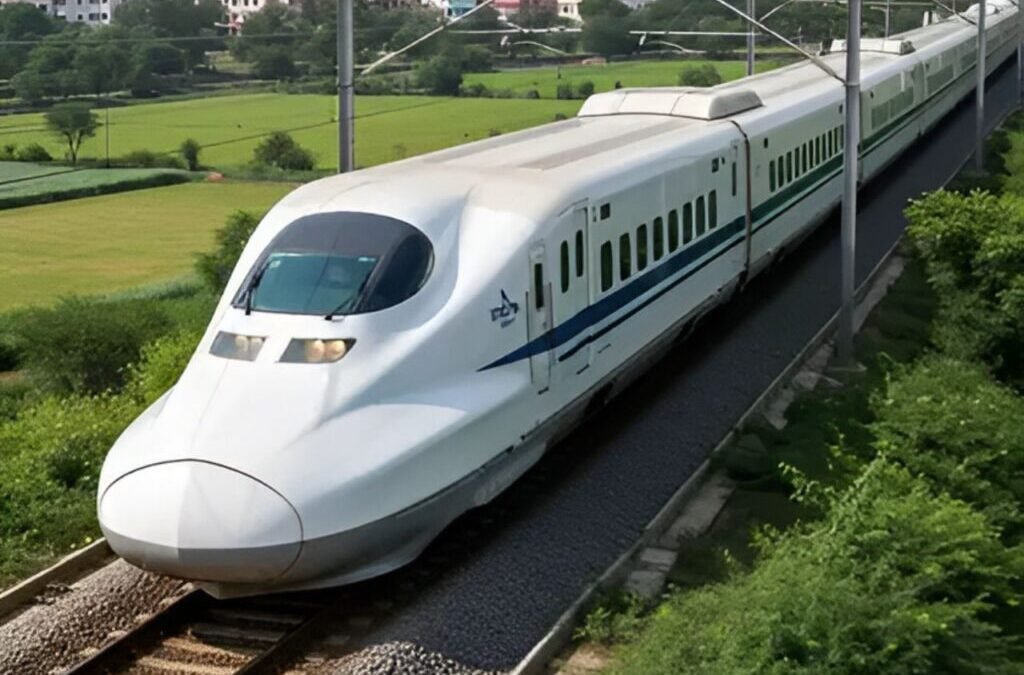Synopsis- The Ahmedabad–Mumbai High-Speed Rail (MAHSR) project will be a game-changer for real estate, turning Tier-2 cities and suburbs into investment hotspots. Due to improving property values, improved infrastructure, and expanding cities, it can ensure sustainable development if we plan for and invest in infrastructure readiness and have a clear regulatory framework.
Introduction
India’s first bullet train project—the Ahmedabad–Mumbai High-Speed Rail (MAHSR)—is not just a transportation mode shift; it is also an important driver of economic and spatial transformation, facilitating travel between two of India’s major economic centres will be just over two hours. The 508 km corridor has already set off real estate excitement across Gujarat and Maharashtra. This article will consider how the MAHSR will change real estate markets, in particular in Tier-2 cities and new settlements along the line.
The MAHSR Project: Fast Tracks and Faster Growth
- Route and Scope: The Ahmedabad–Mumbai High-Speed Rail (MAHSR) system will be 508 kilometres in length with 12 stations, including important urban centres in Ahmedabad, Vadodara, Surat, Boisar, Thane, and Mumbai.
- Technology and Speed: The system will use Japan’s E5 Series Shinkansen technology to operate at speeds of 320 km/h and ease the movement of passengers.
- Timeline: Gujarat will be able to initiate operations by 2027, with the expectation that the full corridor should be open for operation by 2028–2030.
- Economic Impact: Beyond speed, the MAHSR is also expected to improve regional logistics, improve workforce mobility, and create long-term real estate and urban development opportunities when aligned with appropriate planning.
Emerging Real Estate Hotspots
- Surat: Surat, already a diamond and textile centre, is rapidly adding residential towers and commercial developments surrounding the bullet train station. There are double-digit increases in property prices, suggesting there was early investor activity.
- Vadodara: The affordable property prices are bringing mid-sized developers and private investors who think long-term to Vadodara.
- Mumbai Suburbs like Thane, Virar & Boisar: These outer suburbs are seeing growth in high-rise houses and integrated township planning with less commuting time to Mumbai.
- Smaller Hubs like Sabarmati & Anand: These towns, once ignored, are now attracting NRIs and institutional investors with land banking and co-living.
- Common Trends: There is fast development in warehousing, hospitality, co-living and retail across many of the stations, as well as a focus on Transit Oriented Development (TOD) to shape future master plans.
Satellite Townships & Affordable Housing Expansion
- Urban Decongestion & Lifestyle Change: The bullet train offers the potential to avoid living and working in overcrowded urban cores, allowing professionals to connect from farther, affordable towns.
- Emerging Satellite Towns: Developers are acquiring land on the outskirts of cities, such as Palghar, Bilimora, and Vapi, to develop integrated, affordable housing.
- New-Age Housing Models: This change is offering gated communities, smart housing options and master-planned towns to buyers from the middle-class and rental investors, where “live anywhere, work anywhere” is a reality.
Investment Trends and Market Shifts
The real estate landscape around MAHSR (Mumbai–Ahmedabad High-Speed Rail) stations is witnessing a sharp transformation, with land values already surging by (10–40)% due to new infrastructure and the promise of sustained growth. This has accelerated institutional interest, with REITs and large players entering the market, offering prospects of solid rental yields and long-term value. Builder activity is intensifying, especially in emerging high-potential corridors like Gandhinagar and SG Highway in Ahmedabad, marked by pre-launch offers, land banking, and integrated township developments. Growth is no longer limited to residential projects, as demand expands into logistics parks, office complexes, and shopping malls to serve a dynamic, mobile workforce. Amid this momentum, experts urge investor prudence—emphasizing the need to focus on infrastructure readiness, sound location fundamentals, and transparent urban planning over speculative buying.
Barriers to Real Estate Realization
- Land Acquisition Delays: Key locations in Maharashtra, especially around the BKC and Thane regions, are seeing delays in land acquisition, slowing down station development.
- Infrastructure Deficits: Most emerging areas have no roads, utilities, or last-mile transit options, rendering livability project-based concerns immediately.
- Regulatory Roadblocks: Delays in zoning permissions and township approvals will also delay real estate projects.
- Speculative Overpricing: Land prices around the stations have increased at a quicker pace than actual demand might support, particularly in haphazardly planned areas or those still underdeveloped.
Conclusion
The MAHSR provides more than just faster travel; it will also facilitate spatial transformations. Real estate stakeholders need to think past speculation and get in line with long-term infrastructure goals. If it can be planned intentionally, the corridor is capable of enabling sustainable urban growth, new housing centres, and equitable development opportunities. It has the potential to become India’s model for transport-based property value development.
Written by N G Sai Rohith
The post 508 Kms in Just Over 2 Hours! Is the Ahmedabad-Mumbai Bullet Train About to Trigger a Real Estate Boom in Connected Areas? appeared first on Trade Brains.

